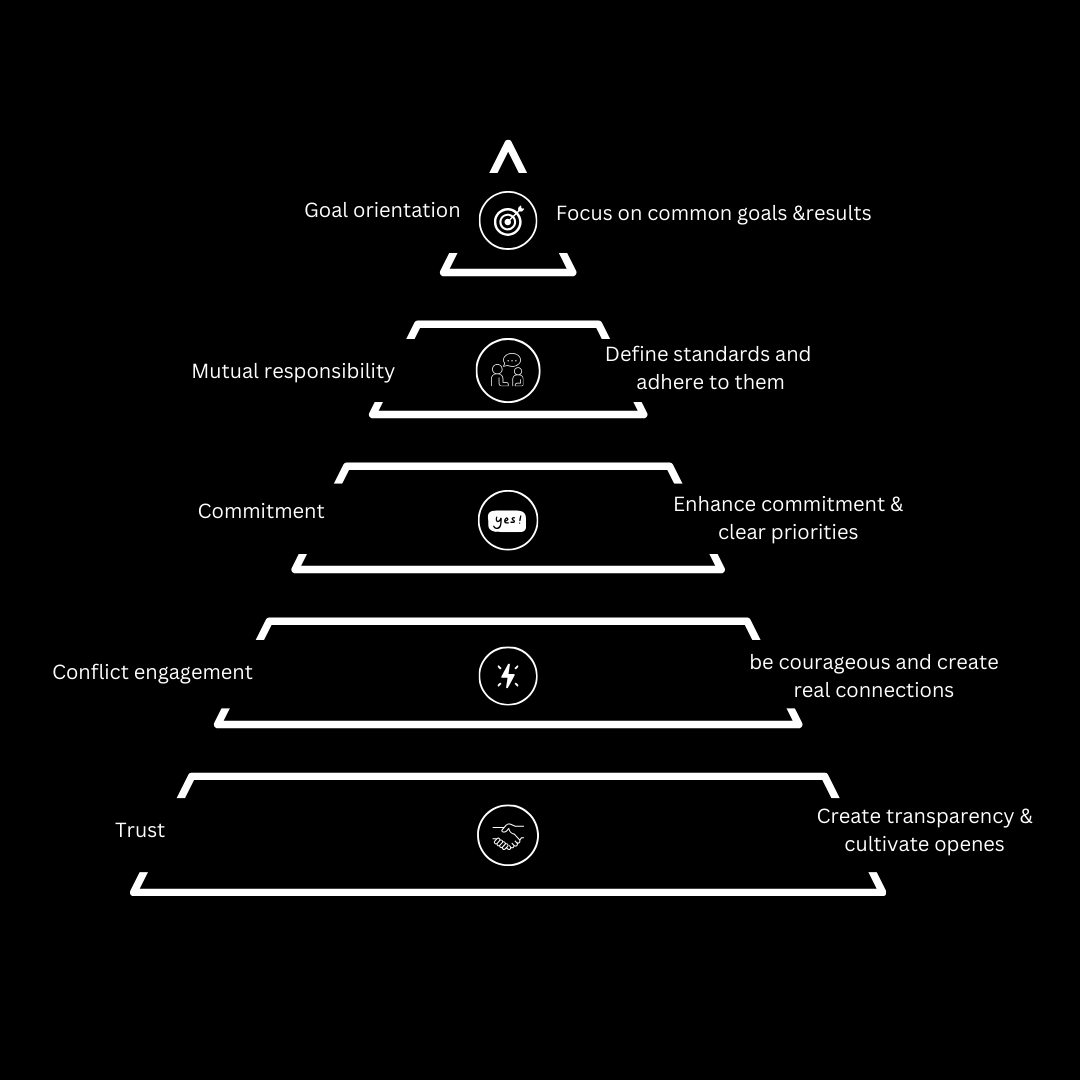FIVE LEVELS TO TEAM SUCCESS
BENEFIT EVEN MORE FROM HIGH-PERFORMING TEAMS
FROM THE 5 DYSFUNCTIONS TO THE FIVE LEVELS OF TEAM SUCCESS
Some teams hide their weaknesses and failures from each other, are reluctant to voice their opinions, or discuss the same topics over and over again, or simply don’t deliver. We’ve seen it all before and, unfortunately, we experience it again and again!
Managing a team or working in a team where power struggles, a lack of a sense of responsibility or jockeying for position are the norm is commonplace in many organizations. For those affected, it leads to burnout, resignation, illness and more.
The good news is, this can be changed! Dysfunctional behavior in teams has very recognizable causes. With awareness and communication, even the most difficult teams can get back on the same page and achieve their goals.
Managing a team or working in a team where power struggles, a lack of a sense of responsibility or jockeying for position are the norm is commonplace in many organizations. For those affected, it leads to burnout, resignation, illness and more.
The good news is, this can be changed! Dysfunctional behavior in teams has very recognizable causes. With awareness and communication, even the most difficult teams can get back on the same page and achieve their goals.
Are you not sure what the current state of your team is? If not, just answer a few questions and you will know.
THE 5 LEVELS OF HIGH PERFORMING TEAMS
The author, business and leadership consultant Patrick Lencioni provided with the “5 Dysfunctions of a Team” a simple model to determine the status quo.
Based on this, we have brought together Lencioni’s 5 dysfunctions and the associated positive needs. Their fulfillment is necessary for sustainable team success:
Based on this, we have brought together Lencioni’s 5 dysfunctions and the associated positive needs. Their fulfillment is necessary for sustainable team success:
– Lack of openness vs. trust
– Artificial harmony vs. productive conflict readiness
– Ambiguity vs. self-commitment
– Low standards vs. accountability
– Dominance of status vs. goal orientation
Each dysfunction has a direct impact on a team’s performance and hinders overall productivity.
The good news is that you can overcome all these dysfunctions with leadership and management skills!!
– Artificial harmony vs. productive conflict readiness
– Ambiguity vs. self-commitment
– Low standards vs. accountability
– Dominance of status vs. goal orientation
Each dysfunction has a direct impact on a team’s performance and hinders overall productivity.
The good news is that you can overcome all these dysfunctions with leadership and management skills!!

The five needs form the levels of a pyramid. And here, you cannot sustainably optimize the values of a higher level without first addressing the needs of the lower level.
Have you and your team already reached the top of the pyramid? Learn where you currently stand with our questionnaire:
WHY YES AND WHY?
In collaboration with our psychologists and agile experts, we have developed an initial indication of the current status analysis, which can be used to uncover team problems and form the basis for a reappraisal – so that your team can work more effectively and achieve optimal results.
Following the questionnaire, our workshop is suitable for teams of up to 12 people. By adding an external team coach, the team also benefits from the fact that the coach is impartial, neutral questions can be asked and unspoken issues can be captured.
Do you have questions about us or the initial indication?
Feel free to contact us directly here.
Following the questionnaire, our workshop is suitable for teams of up to 12 people. By adding an external team coach, the team also benefits from the fact that the coach is impartial, neutral questions can be asked and unspoken issues can be captured.
Do you have questions about us or the initial indication?
Feel free to contact us directly here.
